The annual World Press Photo contest, now in its 57th edition, awards the best in visual journalism.
The winning photographs in nine categories, selected by an international jury of professionals in photojournalism, were announced on Feb. 14. They will be presented in a year-long exhibition traveling through more than 100 cities in over 45 countries, starting on April 18, in Amsterdam. The descriptions of all the photos are from the World Press Photo website.1. World Press Photo of the Year 2013 – John Stanmeyer (U.S.) for National Geographic

REUTERS/John Stanmeyer/World Press Photo Handout via Reuters
In this photo, titled “Signal,” African migrants on the shore of Djibouti city at night, raise their phones in an attempt to capture an inexpensive signal from neighboring Somalia—a tenuous link to relatives abroad.
Djibouti is a common stop-off point for migrants in transit from such countries as Somalia, Ethiopia and Eritrea, seeking a better life in Europe and the Middle East.
2. Spot News Stories, 1st prize – Goran Tomasevic (Serbia) for Reuters

AP Photo/Goran Tomasevic, Reuters
In this photo, from the series, “Rebels Attack Government Checkpoint,” Syrian rebel fighters take cover amid flying debris and shrapnel after being hit by a tank shell fired towards them by the Syrian Army in the Ain Tarma neighborhood of Damascus, Syria.
On Jan. 30, 2013, a Syrian rebel group planning an attack on government forces was hit by sniper fire in Damascus. After evacuating their comrade, who was shot in the chest and would later die from injuries, the rebels returned to attack the checkpoint with rocket fire. Subsequently, government forces fired tank shells at the rebels. The rebels eventually retreated for the day to mourn the death of their comrade.
3. Staged Portraits Single, 1st Prize – Brent Stirton (South Africa) for Getty Images

AP Photo/Brent Stirton, Reportage by Getty Images
A group of blind albino boys photographed in their boarding room at the Vivekananda mission school for the blind in West Bengal, India, on Sept. 25, 2013.
This is one of the very few schools for the blind in India today.
4. Nature Stories, 3rd prize – Christian Ziegler (Germany) for National Geographic

AP Photo/Christian Ziegler, National Geographic Magazine
In this photo, from the series “Bonobos – Our Unknown Cousins,” a 5-year-old wild bonobo is seen near the Kokolopori Bonobo Reserve, in the Democratic Republic of Congo on Jan. 25, 2011.
Despite being humans’ closest living relatives, little is known about bonobos and their behavior in remote parts of the Congo basin. Bonobos are threatened by habitat loss and bush meat trade.
5. Observed Portraits Stories, 1st prize – Carla Kogelman (the Netherlands)

AP Photo/Carla Kogelman
A photo from the series, “ICH BIN WALDVIERTEL,” about Hannah and Alena, two sisters living in the rural village of Merkenbrechts, Austria, taken on July 19, 2012.
6. Staged Portraits Stories, 2nd Prize – Denis Dailleux (France) for Agence VU

AP Photo/Denis Dailleux, Agence Vu
In this photo, from the series, “Mother and Son,” Ali, a young Egyptian bodybuilder, poses with his mother in Cairo, Egypt on Feb. 3, 2011.
7. Sports Feature Stories, 1st prize – Peter Holgersson (Sweden)

AP Photo/Peter Holgersson
This photo, from the series, “Nadja Casadei – Heptathlon and Cancer,” top Swedish heptathlon athlete Nadja Casadei is feeling better just before her last treatment in Lidingo, Sweden on Dec. 19, 2013.
Casadei has participated in the World and European Championships in heptathlon. In the autumn of 2013, she was diagnosed with cancer and in January this year, she completed her chemotherapy. She has continued to train throughout her illness, hoping to be healthy and ready by the summer for the Olympics in Rio de Janeiro.
8. Observed Portraits Single, 1st prize – Markus Schreiber (Germany) for the Associated Press

REUTERS/Markus Schreiber/World Press Photo Handout via Reuters
In this photo, titled “Farewell Mandela,” a woman reacts in disappointment after access to see former South Africa President Nelson Mandela was closed on the third and final day of his casket lying in state, outside Union Buildings in Pretoria, South Africa, on Dec. 13, 2013.
9. Nature Stories, 1st prize – Steve Winter (U.S.) for National Geographic

AP Photo/Steve Winter, National Geographic
This photo, from the series, “Cougars,” shows a cougar walking a trail in Los Angeles’ Griffith Park on March 2, 2013. To reach the park, which has been the cougar’s home for the last two years, it had to cross two of the busiest highways in the U.S.
Cougars, one of the most adaptable terrestrial mammals, are increasingly being seen in and around towns and cities, including Los Angeles and in the Hollywood Hills. Fear of these secretive cats, combined with a lack of adequate public knowledge, tends to justify the thousands of cougars killed every year.
10. Contemporary Issues Stories, 1st prize – Sara Naomi Lewkowicz (U.S.)

REUTERS/Sara Naomi Lewkowicz/World Press Photo Handout via Reuters
This photo, from the series, “A Portrait of Domestic Violence,” shows Ohio couple Shane and Maggie fighting as Maggie’s two-year-old daughter, Memphis runs into the room. Shane continued to scream in Maggie’s face as Memphis wedged herself between them.
11. Daily Life Stories, 1st Prize – Fred Ramos (El Salvador) for El Faro

REUTERS/Fred Ramos/World Press Photo Handout via Reuters
This photo, from the series, “The Last Outfit of The Missing,” shows the clothes of an unknown female found at a sugar plantation in Apopa, San Salvador, El Salvador, on Aug. 10, 2013.
The North Central American Triangle (Honduras, Guatemala and El Salvador) is one of the most violent regions in the world. In many cases, clothes that are found become the only means to identify victims.
12. Contemporary Issues Single, 3rd prize – Christopher Vanegas (Mexico) for La Vanguardia / El Guardían

REUTERS/Christopher Vanegas/World Press Photo Handout via Reuters
In this photo, titled “Victims of Organized Crime,” police arrive at a crime scene where two bodies hang from a bridge; another three are on the floor in Saltillo, Coahuila, Mexico, on March 8, 2013.
They had been killed by organized crime in Saltillo, Coahuila, in retaliation against other criminal groups.
13. Spot News Stories, 2nd prize – Tyler Hicks (U.S.) for The New York Times

REUTERS/Tyler Hicks/World Press Photo Handout via Reuters
In this photo from the series “Massacre at Westgate Mall,” a woman and children hide in the Westgate mall in Nairobi, Kenya on Sep. 21, 2013.
They escaped unharmed after gunmen had opened fire at the upscale Nairobi mall.
14. Sports Action Stories, 3rd prize – Quinn Rooney (Australia) for Getty Images

REUTERS/Quinn Rooney/World Press Photo Handout via Reuters
This photo, from the series, “World Swimming Sports,” shows Daniel Arnamnart of Australia competing in the men’s 100-meter backstroke during day two of the Australian Swimming Championships Adelaide, Australia on April 27, 2013.
15. Spot News Single, 1st prize – Phillipe Lopez (France) for Agence France-Presse

REUTERS/Phillipe Lopez/World Press Photo Handout via Reuters
Survivors of typhoon Haiyan march during a religious procession in Tolosa, Philippines, on Nov. 18, 2013.
One of the strongest cyclones ever recorded, Haiyan left 8,000 people dead and missing and more than four million homeless after it hit the central Philippines.
16. General News Stories, 2nd prize – William Daniels (France), Panos Pictures forTime

REUTERS/William Daniels/World Press Photo Handout via Reuters
A photo from the series, “Chaos in Central African Republic,” shows demonstrators gathering on the streets of Bangui on Nov. 17, 2013.
The Central African Republic’s current crisis, triggered by yet another coup, is starting to set in position a well-armed, mainly Muslim militia that is refusing to disarm against Anti-balaka, Christian vigilante groups defending the country’s majority Christian population.
The UN has warned of a potential slide into genocide and France has sent 1,600 troops to protect civilians and disarm the different militia.
17. General News Single, 1st prize – Alessandro Penso (Italy) for OnOff Pictures

REUTERS/Alessandro Penso/World Press Photo Handout via Reuters
This photo shows the temporary accommodation for Syrian refugees in Sofia, Bulgaria on Nov. 21, 2013.
Military Ramp, an emergency refugee center, was opened in September 2013 in an abandoned school in Sofia, Bulgaria. The center provides housing for about 800 Syrian refugees, including 390 children. Bulgaria, already hard hit by the economic crisis and heightened political instability, is totally unprepared to confront a refugee crisis.
18. Sports Action Single, 2nd prize – Andrzej Grygiel (Poland) for Polska Agencja Prasowa

REUTERS/Andrzej Grygiel/World Press Photo Handout via Reuters
This photo, titled “Slalom Action,” shows a competitor at the International Ski Championship in Szczyrk, Poland.


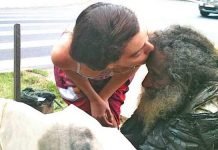


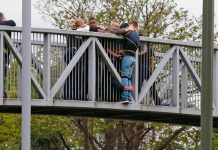
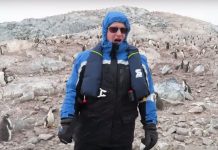




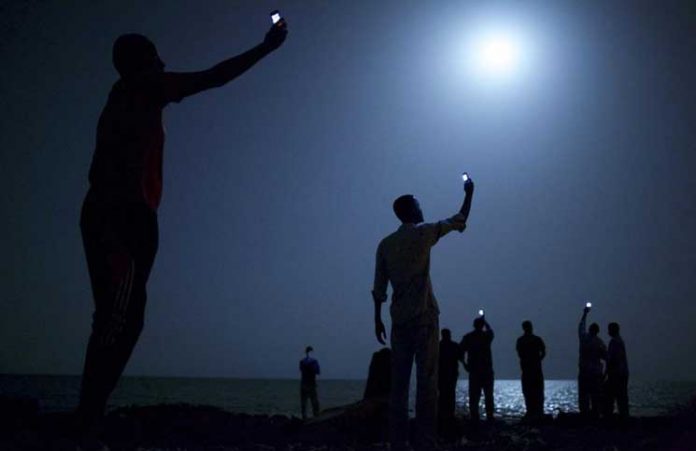
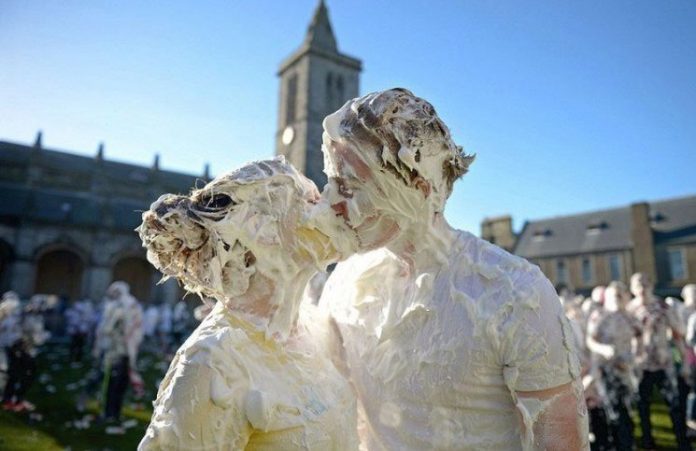
 1. Couple “update” the famous “Kiss in Times Square.”
See also issue – Camye famous kisses
1. Couple “update” the famous “Kiss in Times Square.”
See also issue – Camye famous kisses
 2. Man gives a flower to his beloved.
2. Man gives a flower to his beloved.
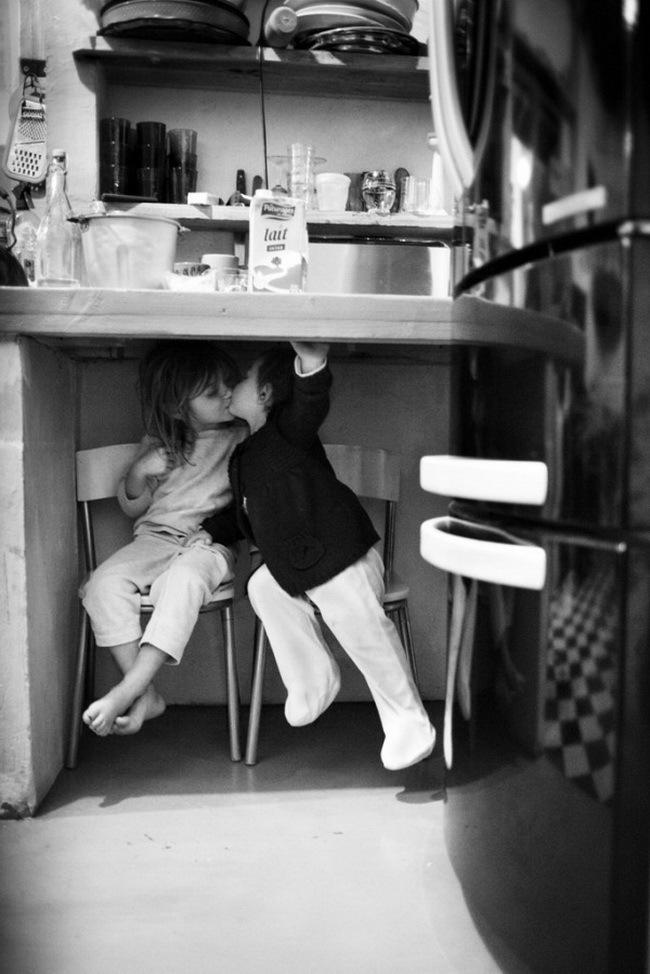 3. Photo from the family album of the sculptor Alain Lebualya.
3. Photo from the family album of the sculptor Alain Lebualya.
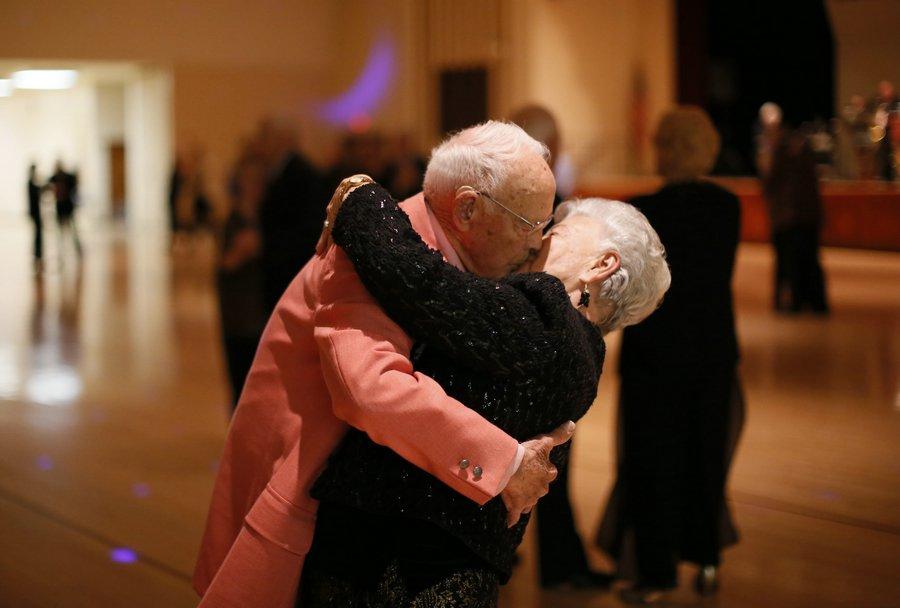 4. 98-year-old Donald Smiterman kisses his wife Marlene after the dance.
4. 98-year-old Donald Smiterman kisses his wife Marlene after the dance.
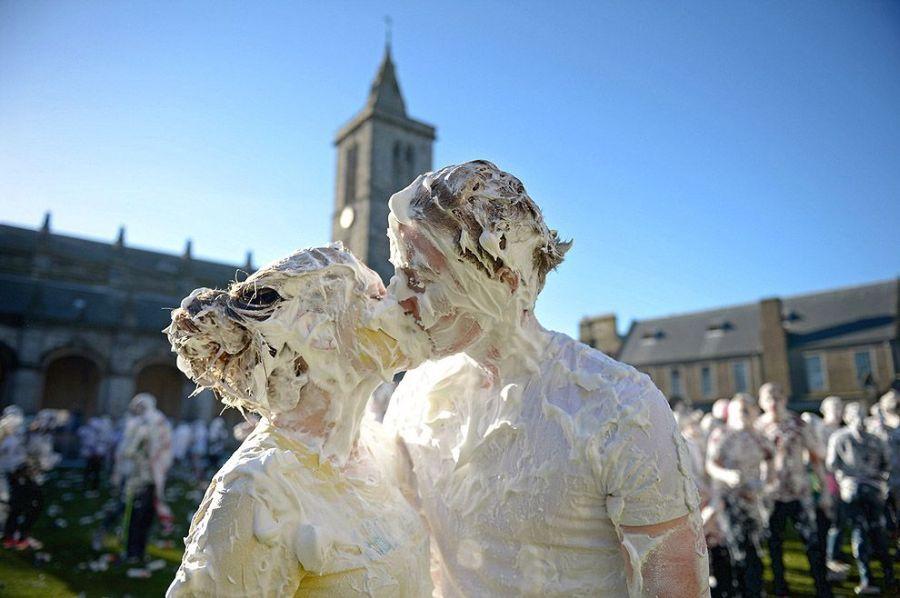 5. Students Scottish University of St Andrews kiss during a foam fight the so-called “raisin Weekend.” At this time, younger students should thank the senior students for tuition.
5. Students Scottish University of St Andrews kiss during a foam fight the so-called “raisin Weekend.” At this time, younger students should thank the senior students for tuition.
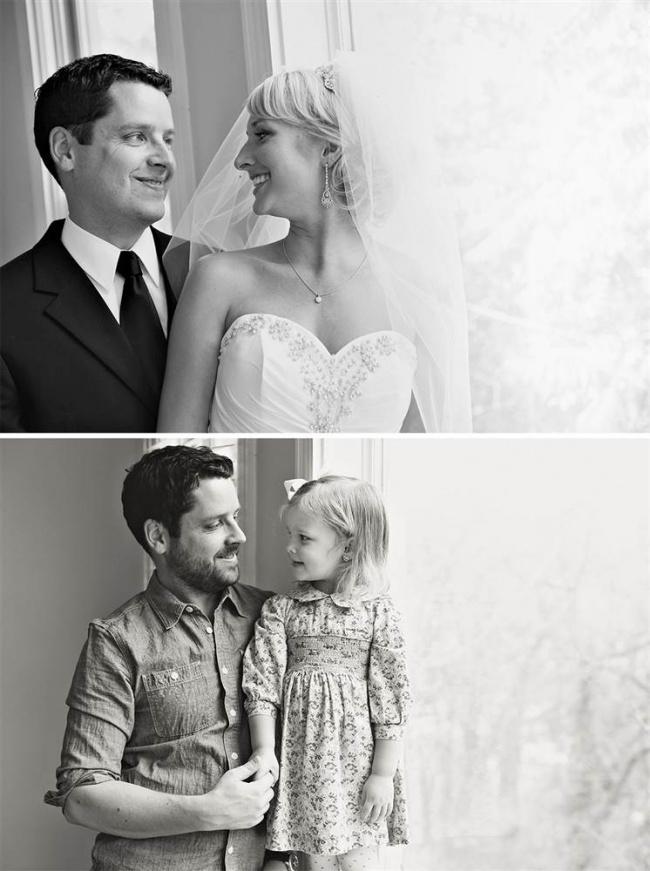 6. Father and daughter wedding photos recreated after the death of his mother.
See also issue – Father and daughter wedding photos recreated to say goodbye to his wife and mother
6. Father and daughter wedding photos recreated after the death of his mother.
See also issue – Father and daughter wedding photos recreated to say goodbye to his wife and mother
 7. “Vancouver Kiss” – the picture was taken during a riot in Vancouver June 15, 2011.
7. “Vancouver Kiss” – the picture was taken during a riot in Vancouver June 15, 2011.
 8. Couple stands on the ruins of her home destroyed by a tornado.
8. Couple stands on the ruins of her home destroyed by a tornado.
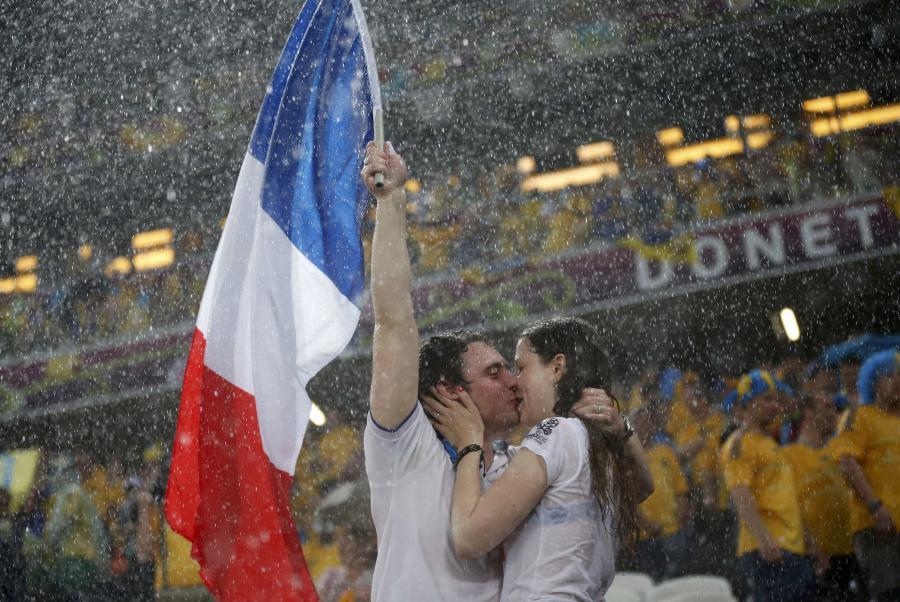 9. French fans kiss before the game their team with a team of Ukraine for the European football championship.
9. French fans kiss before the game their team with a team of Ukraine for the European football championship.
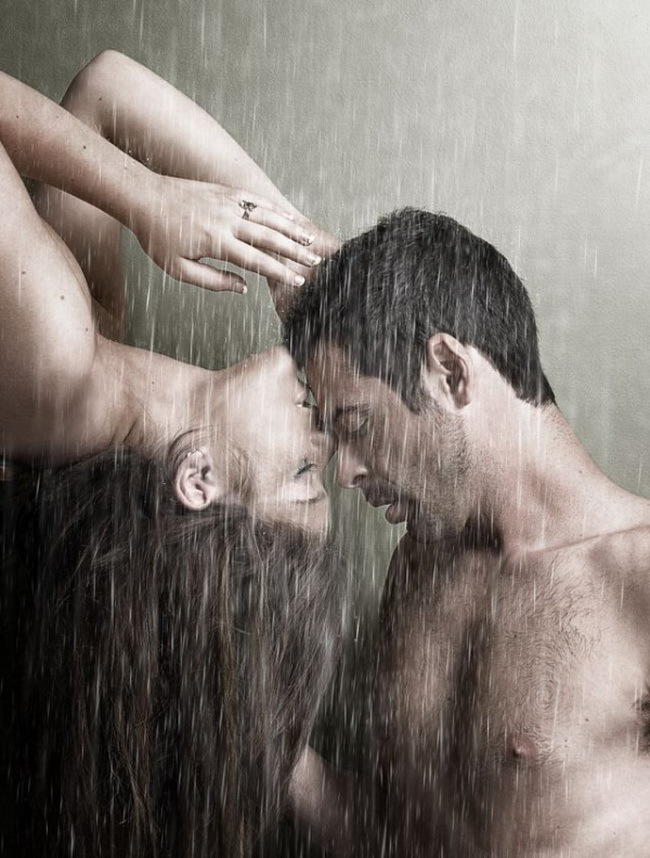 10. Two photographers in love with each other at a distance, and created a photo project about his love, though not seen each other in reality.
10. Two photographers in love with each other at a distance, and created a photo project about his love, though not seen each other in reality.
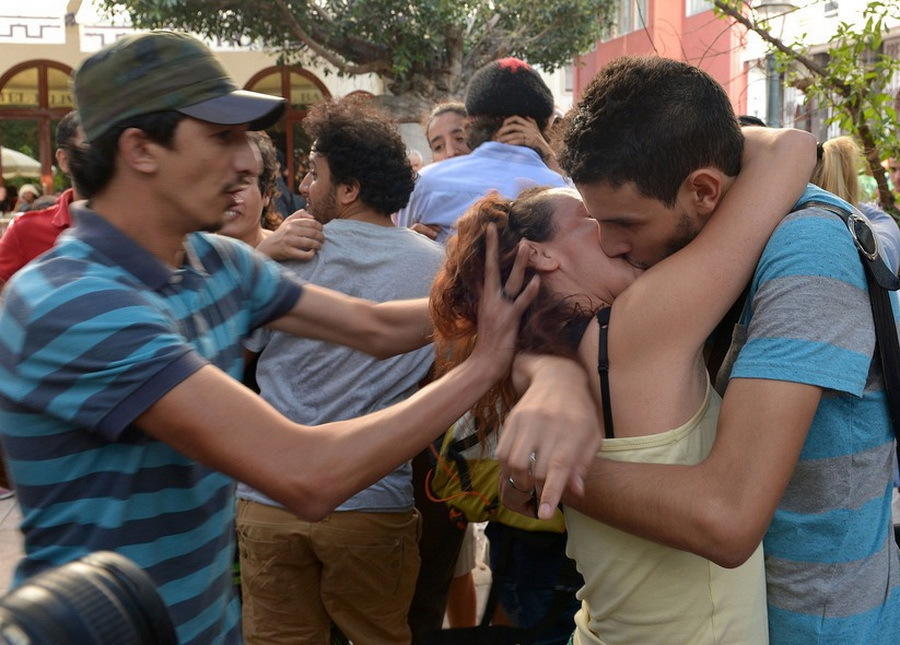 11. A man trying to stop a couple kissing near the parliament building in the Moroccan capital Rabat. They kiss their protest against laws that prohibit such displays of intimacy in public places.
11. A man trying to stop a couple kissing near the parliament building in the Moroccan capital Rabat. They kiss their protest against laws that prohibit such displays of intimacy in public places.
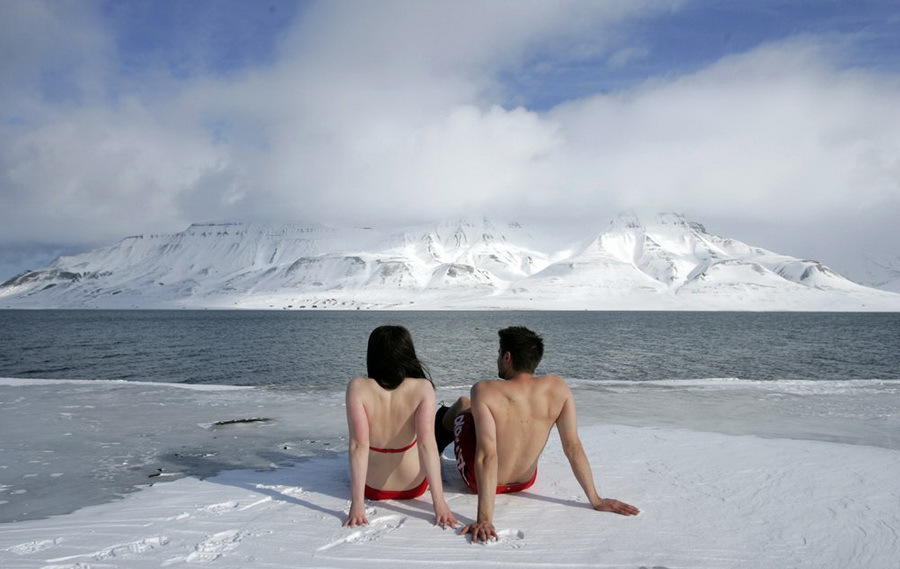 12. Couple environmental activists sunbathe on one of the fjords of Norway.
12. Couple environmental activists sunbathe on one of the fjords of Norway.
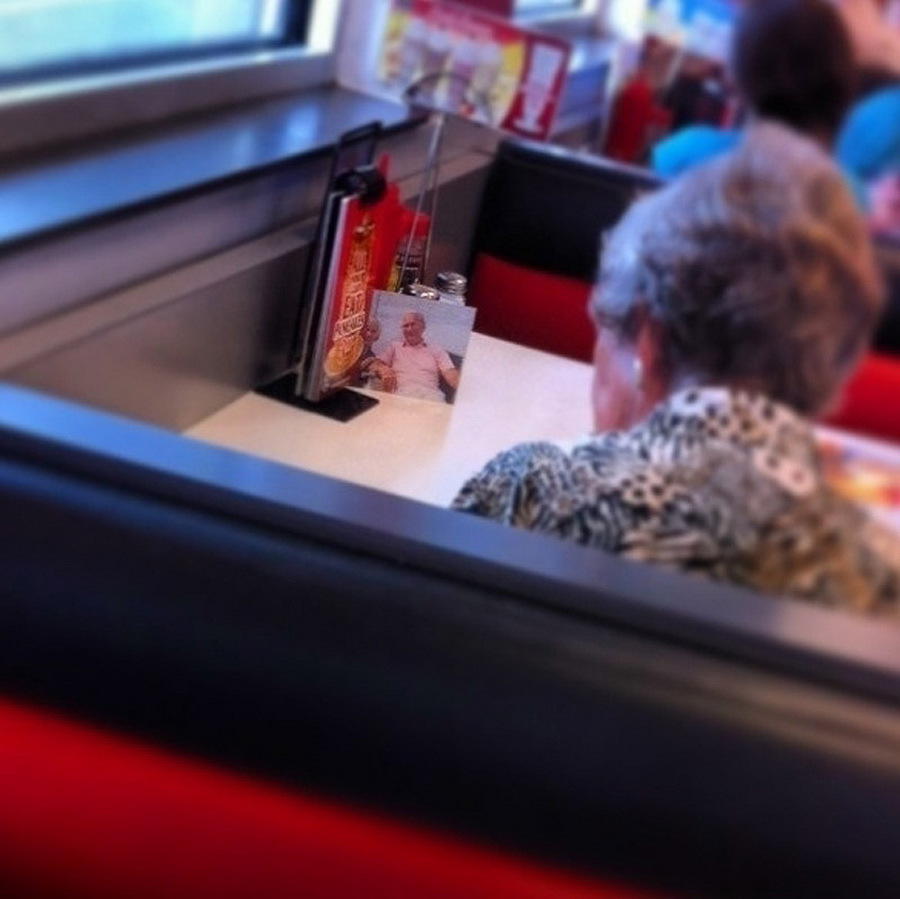 13. This woman’s husband died, but she still has lunch every day with him.
13. This woman’s husband died, but she still has lunch every day with him.
 14. Taylor Morris, who lost limbs due to an explosion in the war, and his wife, Danielle.
14. Taylor Morris, who lost limbs due to an explosion in the war, and his wife, Danielle.
 15. The first wedding photo, which managed to make the Chinese spouses were married 88 years ago.
15. The first wedding photo, which managed to make the Chinese spouses were married 88 years ago.
 16. Man learns the alphabet with his lover after she lost her memory.
16. Man learns the alphabet with his lover after she lost her memory.
 17. Couple Filipinos even called off the wedding because of flooding.
17. Couple Filipinos even called off the wedding because of flooding.
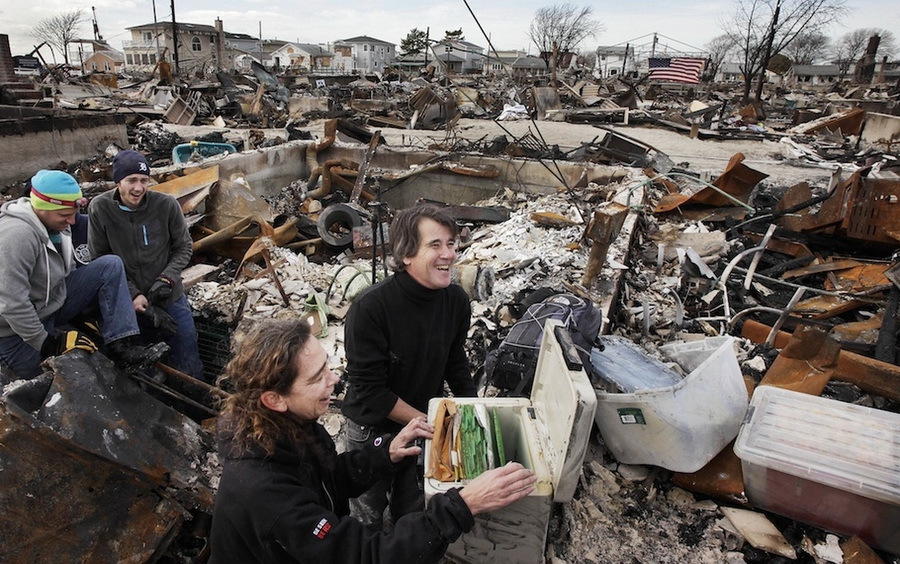 18. Couple glad to find that their family archives survived the hurricane “Sandy”.
18. Couple glad to find that their family archives survived the hurricane “Sandy”.
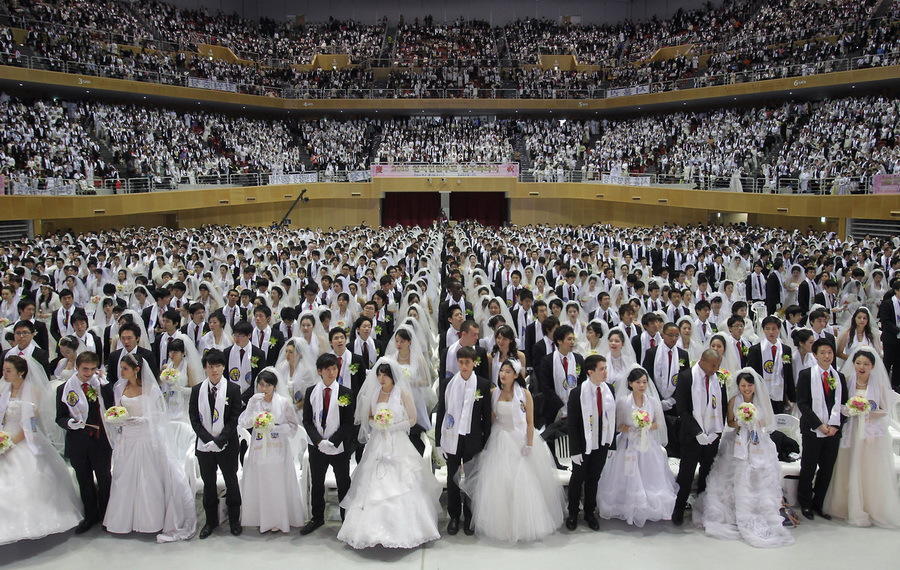 19. In South Korea, while more than 5,000 married couples.
19. In South Korea, while more than 5,000 married couples.
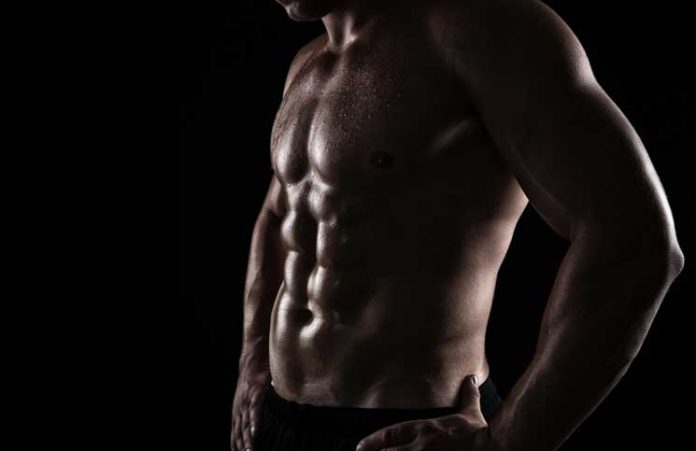
 It doesn’t matter how many crunches you do. Seeing abs is all about body fat, and you need to have 10% or less to see the six-pack. Replace the six-pack in your fridge with green, leafy veggies to start seeing the six-pack on your midsection.
It doesn’t matter how many crunches you do. Seeing abs is all about body fat, and you need to have 10% or less to see the six-pack. Replace the six-pack in your fridge with green, leafy veggies to start seeing the six-pack on your midsection.
 Just like doing endless crunches, training abs every day won’t reduce the amount of body fat you carry. You’ll eventually reach an overtrained state, which can keep you out of the gym for a while, therefore slowing your progress even more.
Just like doing endless crunches, training abs every day won’t reduce the amount of body fat you carry. You’ll eventually reach an overtrained state, which can keep you out of the gym for a while, therefore slowing your progress even more.
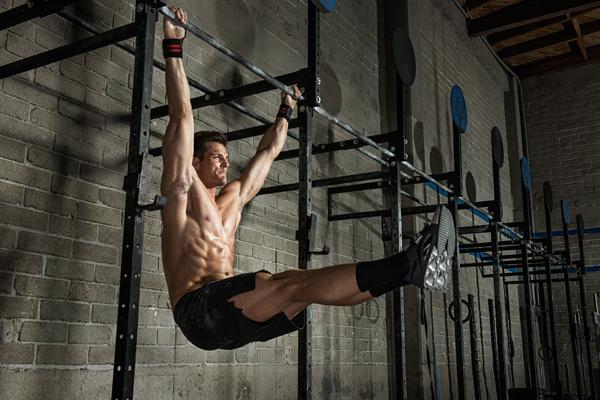 Just like in all other exercises, the lower abs work in conjunction with other muscles. Despite being innervated with several different nerves, there’s no way to really isolate any portion of the abs. Certain moves—such as hanging knee raises—hit the lower abs harder, but they also hit the whole midsection.
Just like in all other exercises, the lower abs work in conjunction with other muscles. Despite being innervated with several different nerves, there’s no way to really isolate any portion of the abs. Certain moves—such as hanging knee raises—hit the lower abs harder, but they also hit the whole midsection.
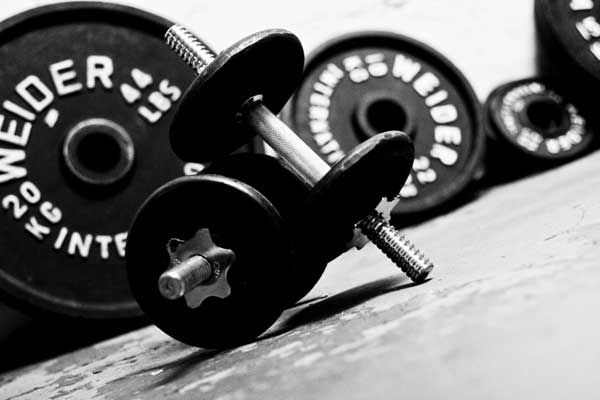 As is the case with all muscles, there needs to be some kind of stimulus in order for the abs to grow, and without size, the abs will not be visible anyway. Moves like weighted situps and resisted leg raises will build the abs better than any unweighted version of the crunch.
As is the case with all muscles, there needs to be some kind of stimulus in order for the abs to grow, and without size, the abs will not be visible anyway. Moves like weighted situps and resisted leg raises will build the abs better than any unweighted version of the crunch.
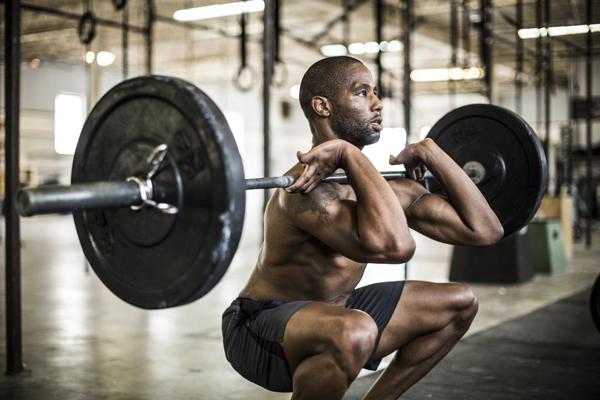 The best ab exercises out there don’t involve a crunching motion at all. Moves such as the overhead press, squat, deadlift, and pull-up hit the abs harder than anything that involves spinal flexion. Plus, spinal flexion puts the back in a terrible position that can lead to serious injury. Swap the crunches for more overhead presses and watch heads turn this summer.
The best ab exercises out there don’t involve a crunching motion at all. Moves such as the overhead press, squat, deadlift, and pull-up hit the abs harder than anything that involves spinal flexion. Plus, spinal flexion puts the back in a terrible position that can lead to serious injury. Swap the crunches for more overhead presses and watch heads turn this summer.
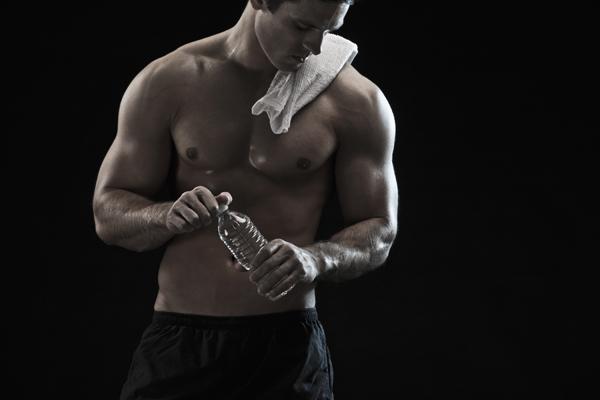 The body is smarter than you think it is. It removes water from skeletal muscles (the ones people can see) before anything else, because water is vital to several bodily processes that are much more important than flexing your abs. That means the water from your muscles will go toward things like the creation of new blood cells and your brain telling your heart to beat.
The body is smarter than you think it is. It removes water from skeletal muscles (the ones people can see) before anything else, because water is vital to several bodily processes that are much more important than flexing your abs. That means the water from your muscles will go toward things like the creation of new blood cells and your brain telling your heart to beat. 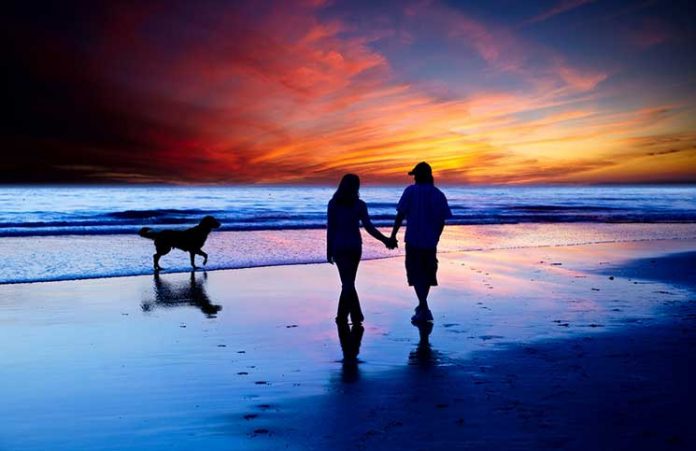


 The interior of an abandoned church is seen on September 5, 2013 in Detroit, Michigan. Detroit is struggling with over 78,000 abandoned homes across 140 square miles and 16% unemployment; in July, the city declared bankruptcy.
The interior of an abandoned church is seen on September 5, 2013 in Detroit, Michigan. Detroit is struggling with over 78,000 abandoned homes across 140 square miles and 16% unemployment; in July, the city declared bankruptcy.
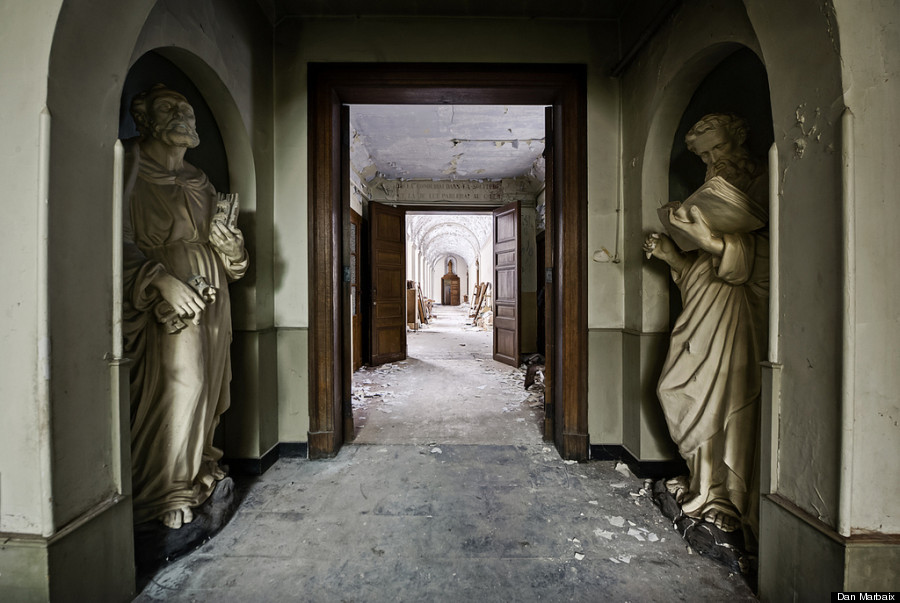 Sculptures watch silently at this monastery in Belgium.
Sculptures watch silently at this monastery in Belgium.
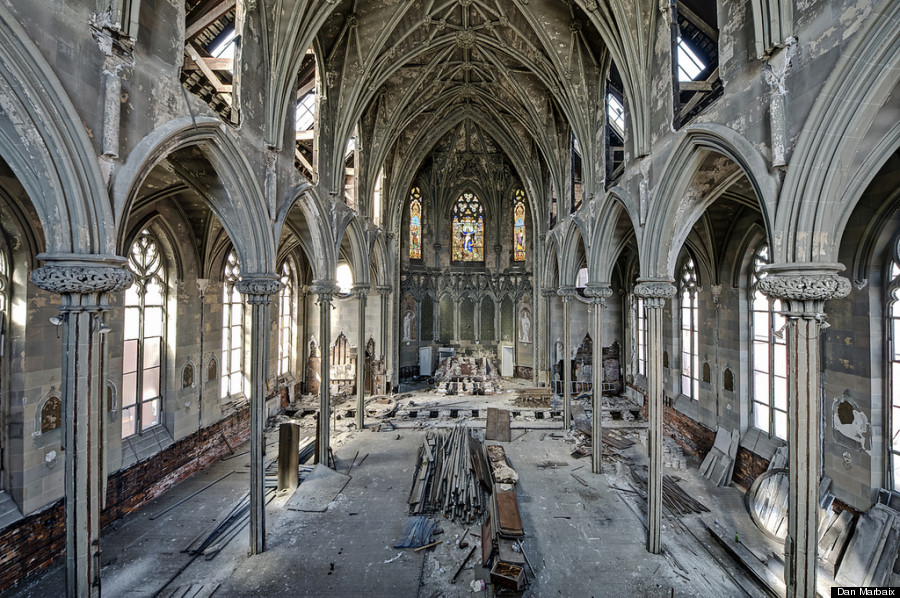 An abandoned church in Pennsylvania is filled with construction detritus below the graceful arches.
An abandoned church in Pennsylvania is filled with construction detritus below the graceful arches.
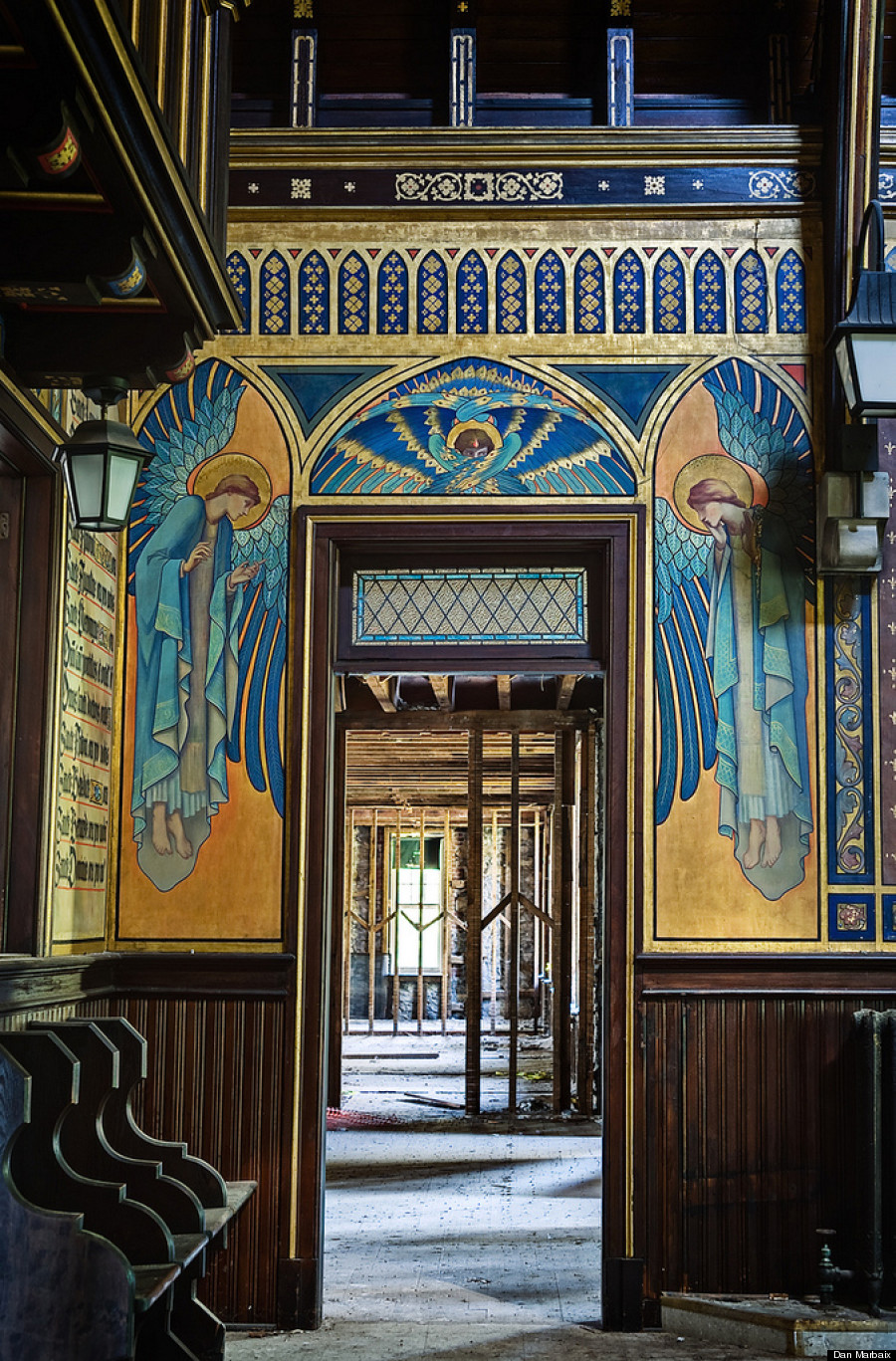 This New York state chapel still has bright artwork, but no more parishioners.
This New York state chapel still has bright artwork, but no more parishioners.
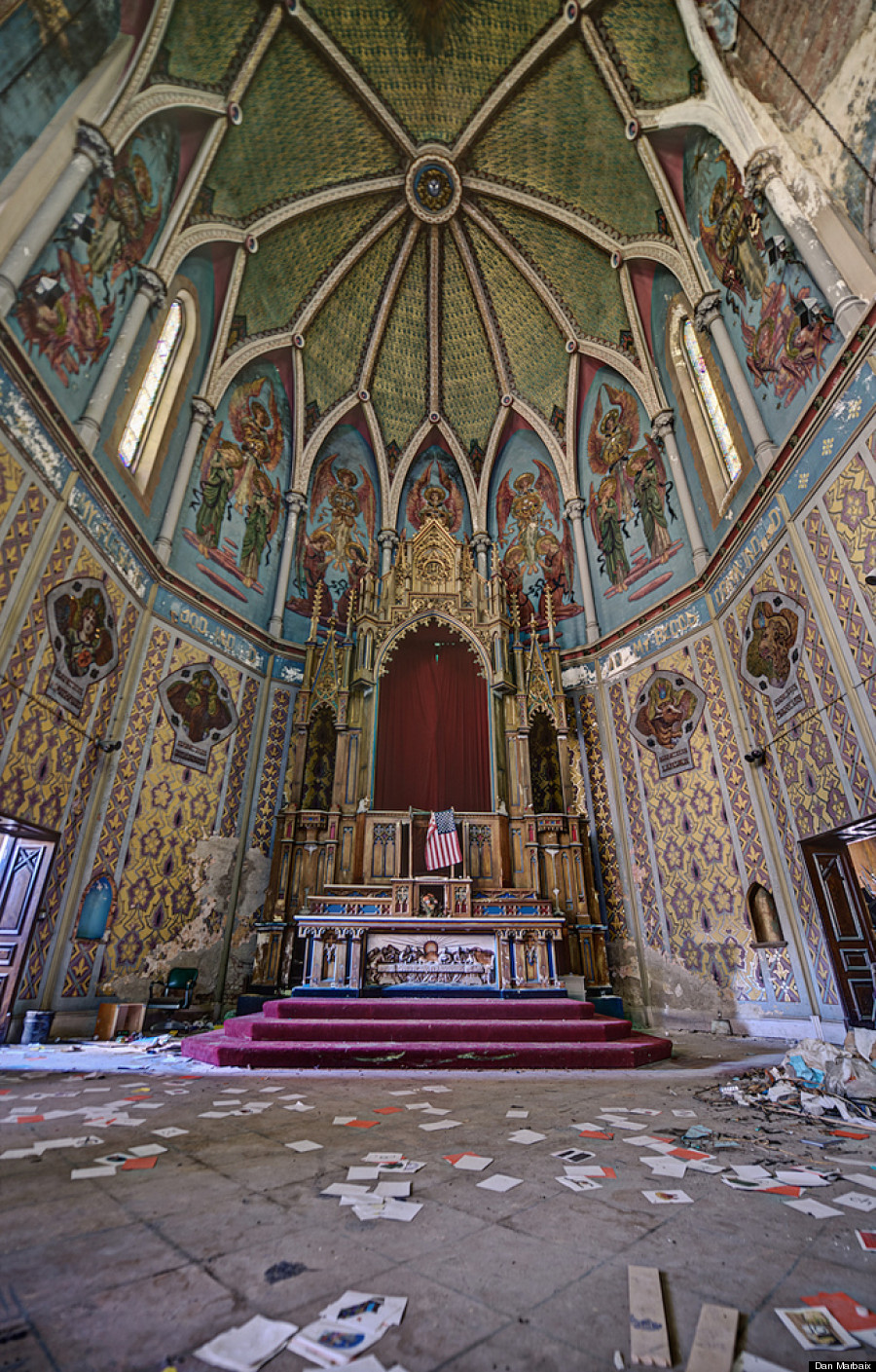 This Pennsylvania church lies empty, waiting for the people to return.
This Pennsylvania church lies empty, waiting for the people to return.
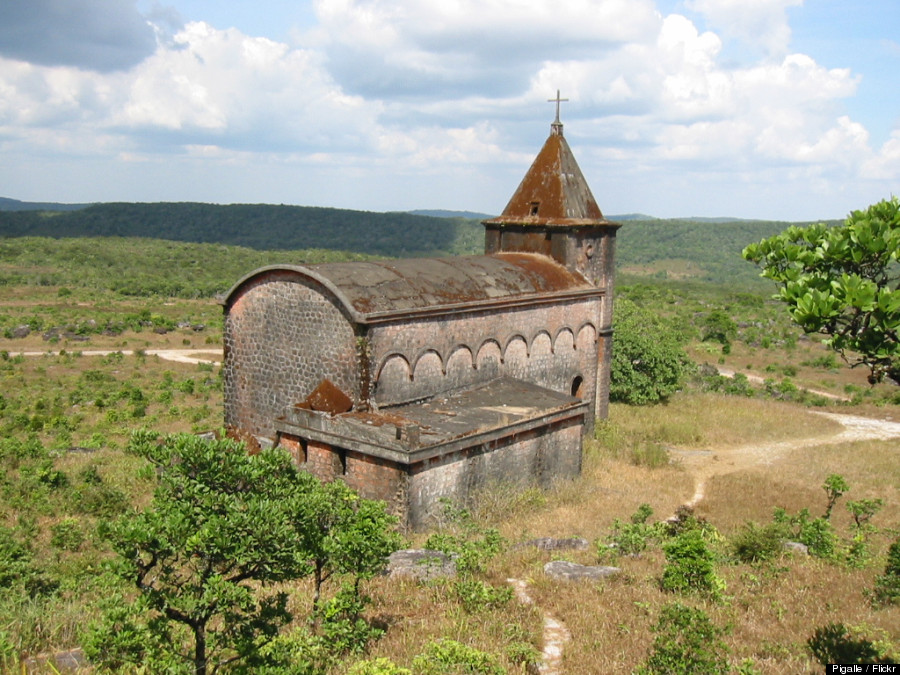
 Though the stained glass still shines brightly, this Pennsylvania church is in a sad state of disrepair.
Though the stained glass still shines brightly, this Pennsylvania church is in a sad state of disrepair.
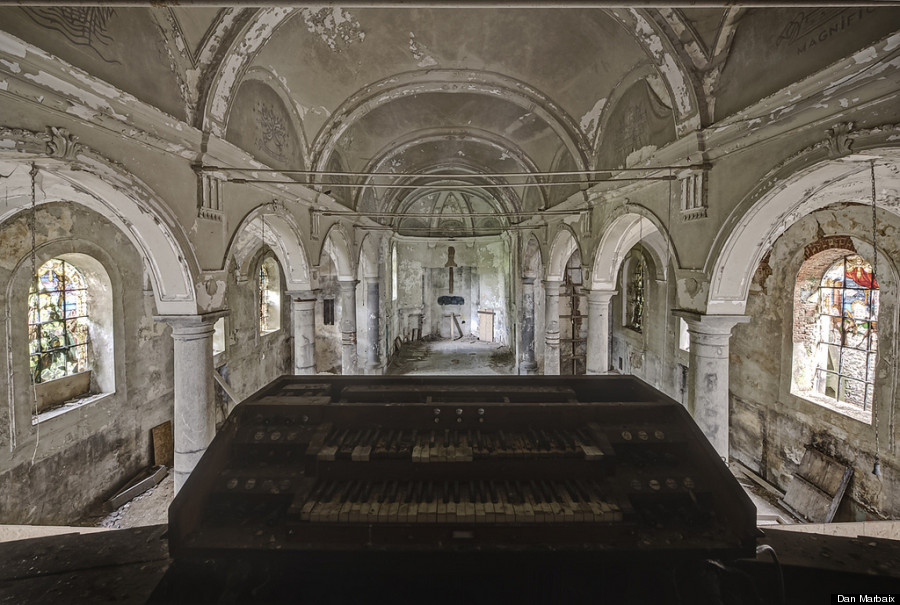 Though the roof still keeps out the rain, the organ of this Belgian church won’t be playing any hymns soon.
Though the roof still keeps out the rain, the organ of this Belgian church won’t be playing any hymns soon.
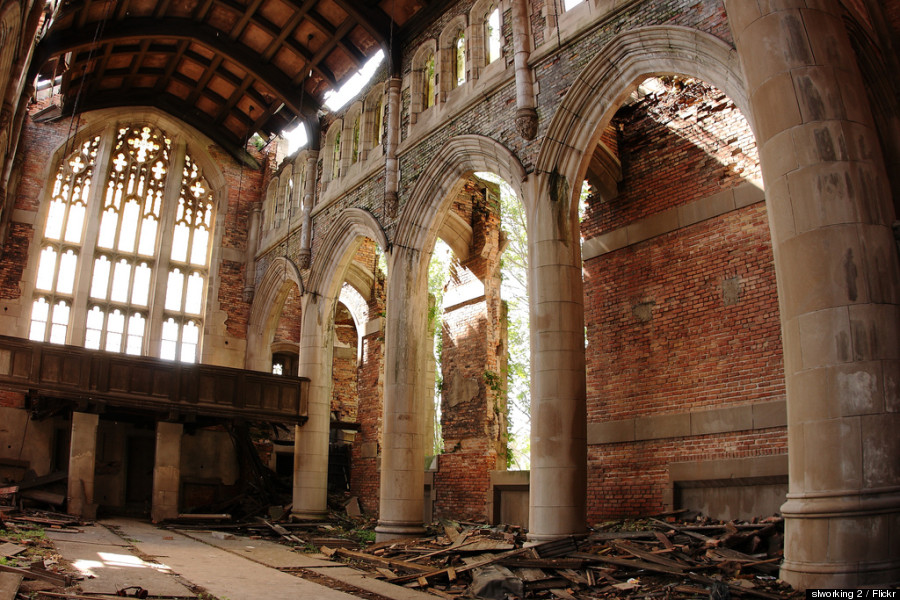
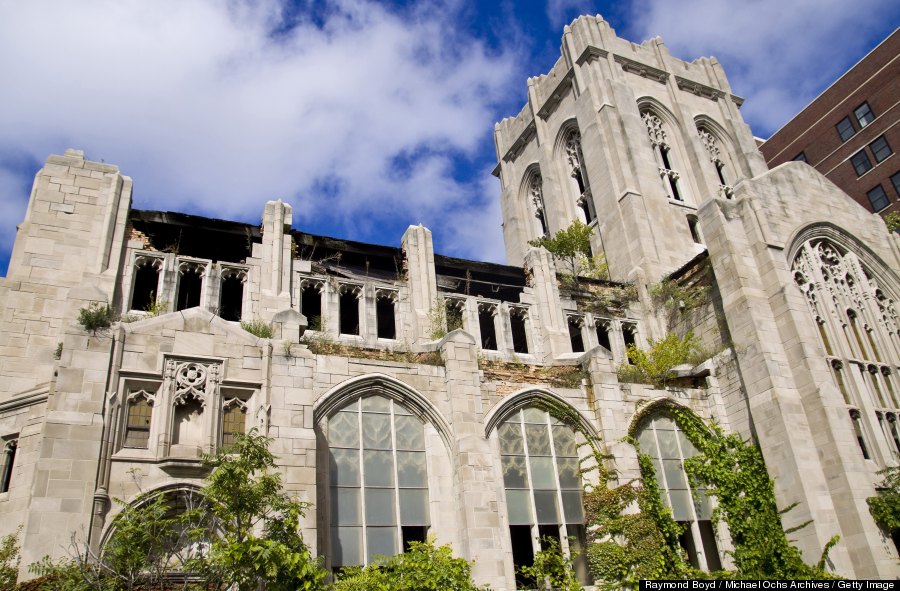 An exterior look at the plants taking over Gary Methodist Church in Gary, Indiana.
An exterior look at the plants taking over Gary Methodist Church in Gary, Indiana.
 An abandoned Catholic school in France
An abandoned Catholic school in France
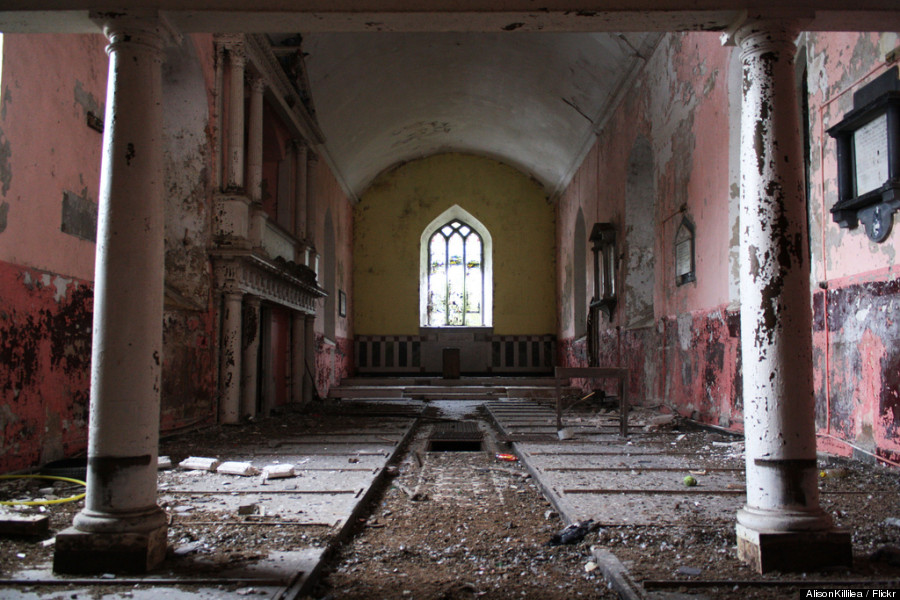
 Long exposure of star trails wheeling over a clear night sky above a derelict rural church, taken on October 27, 2011
Long exposure of star trails wheeling over a clear night sky above a derelict rural church, taken on October 27, 2011
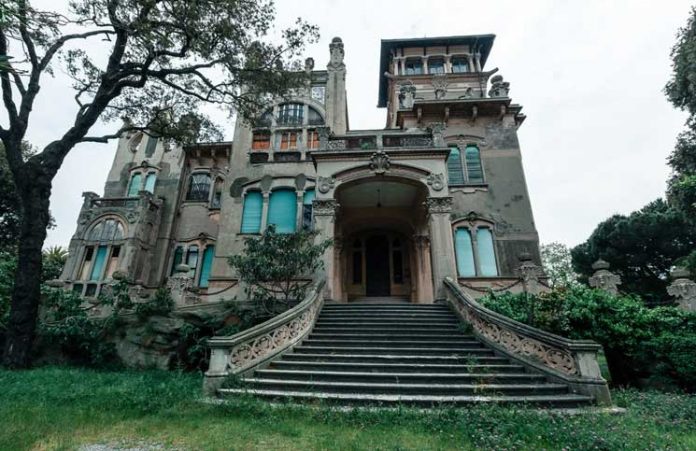
















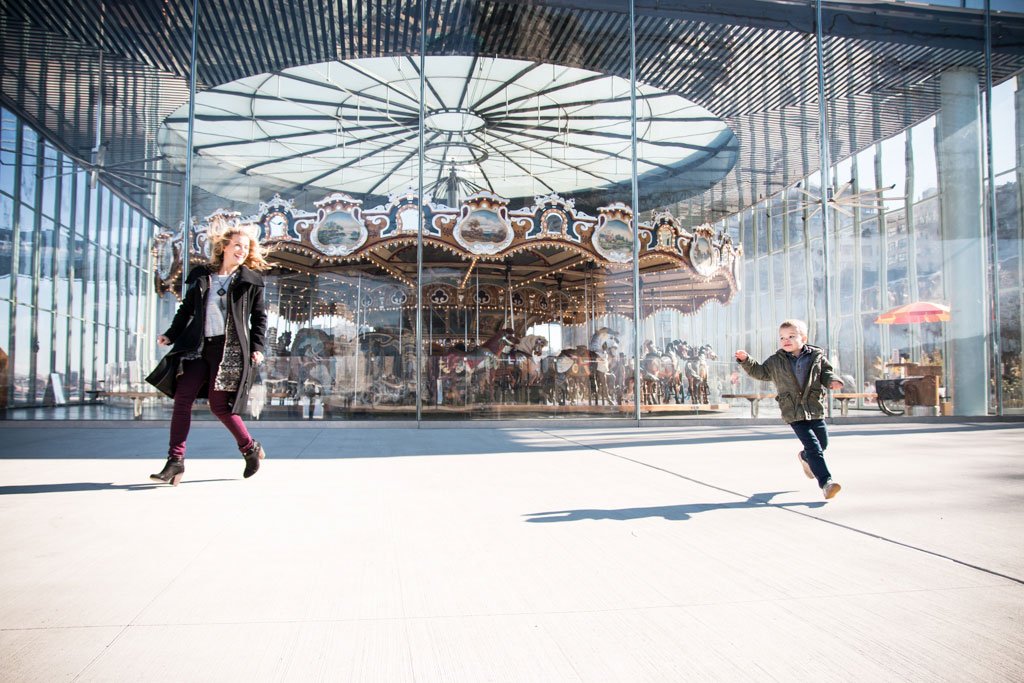
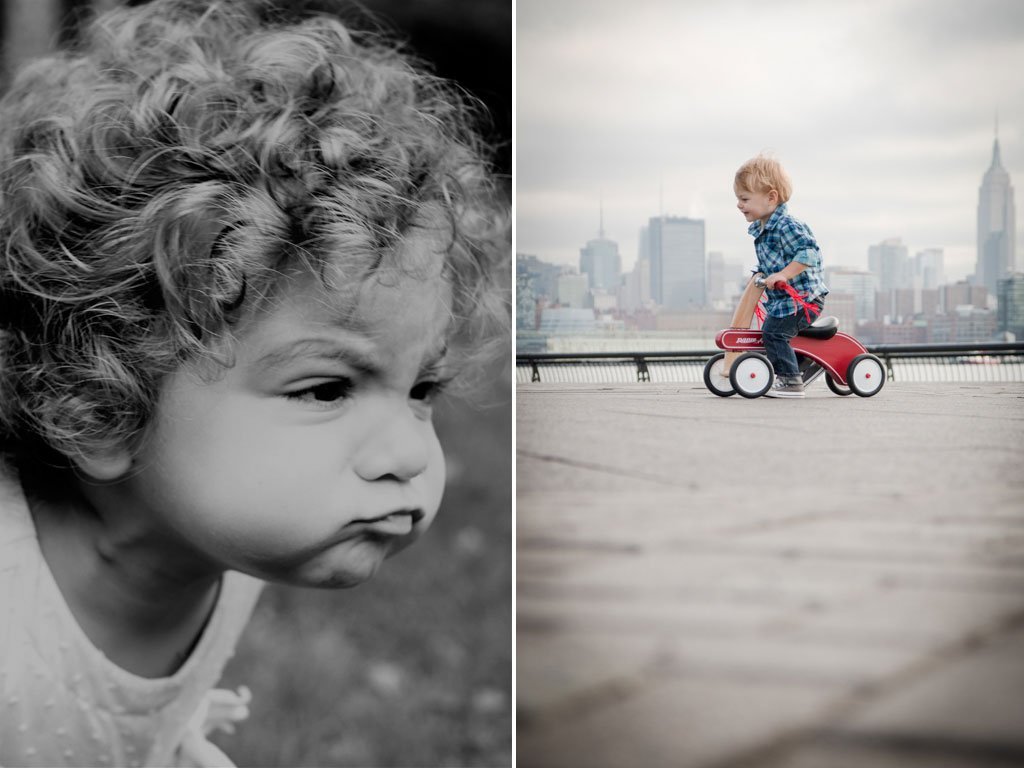

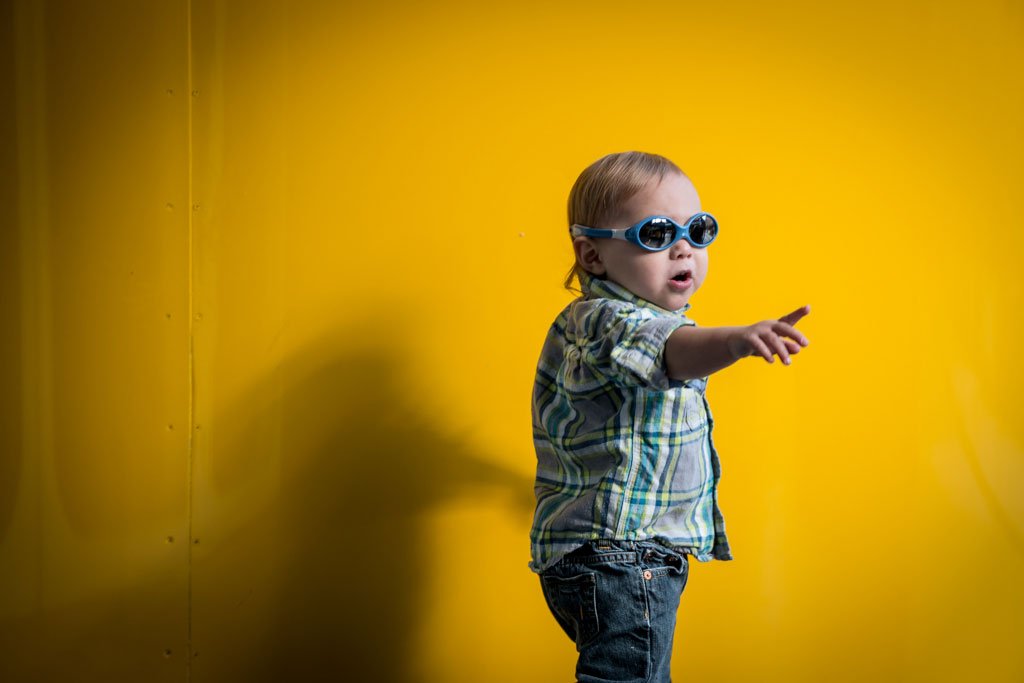
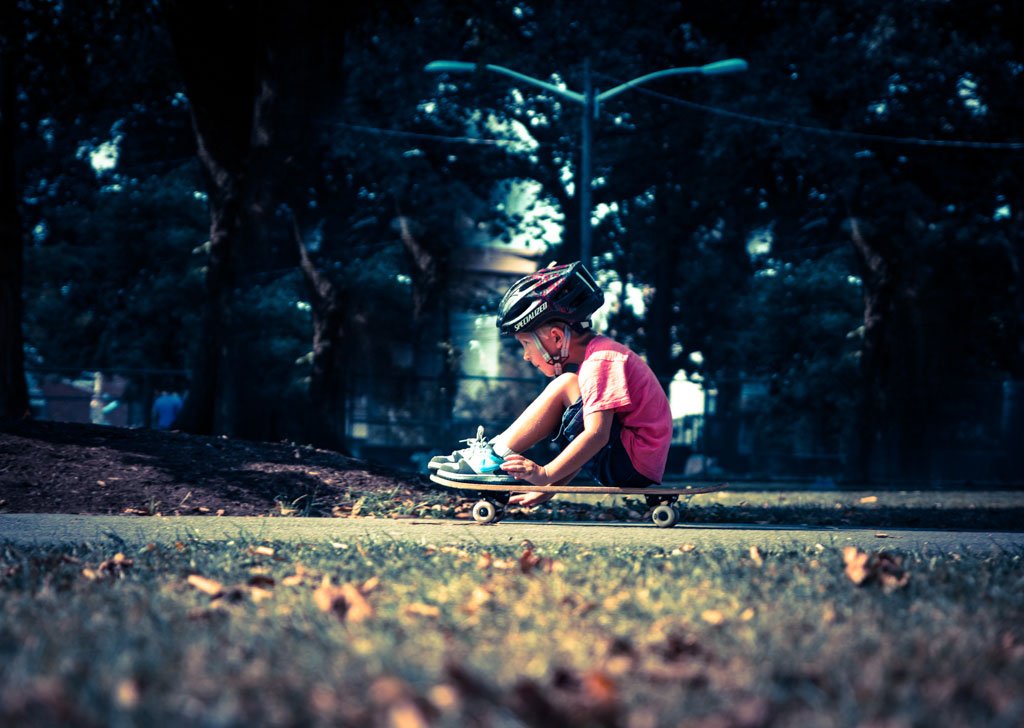
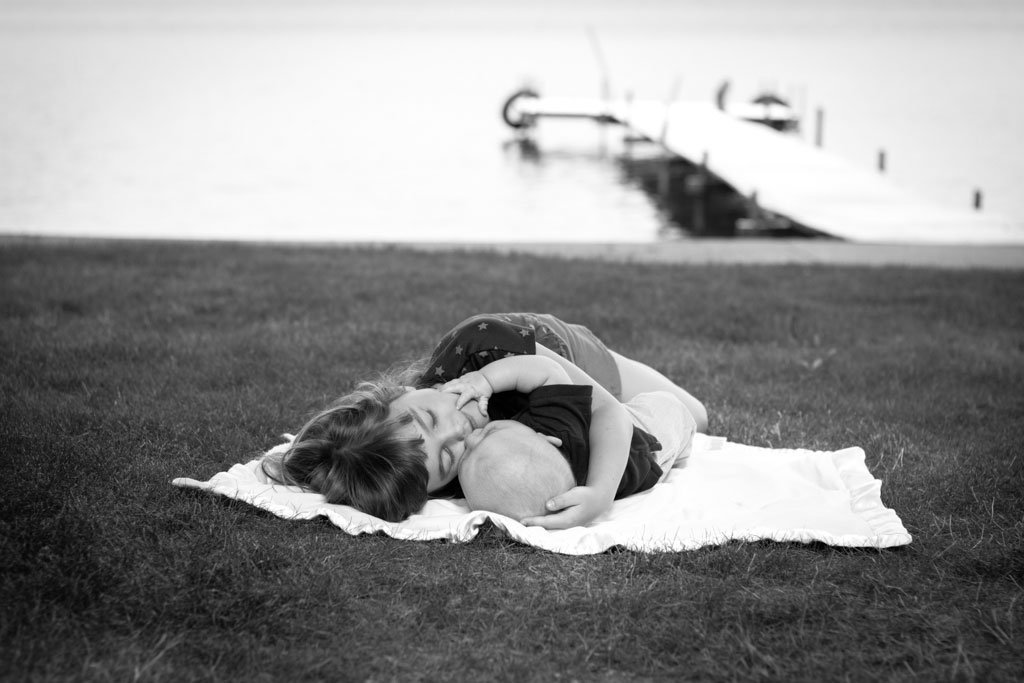

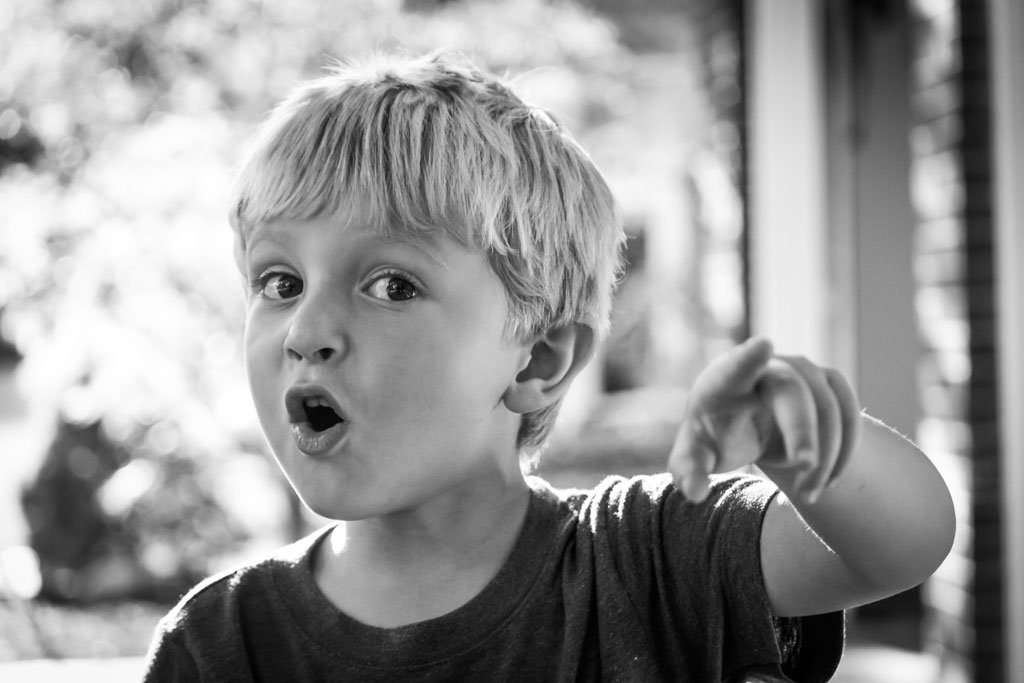

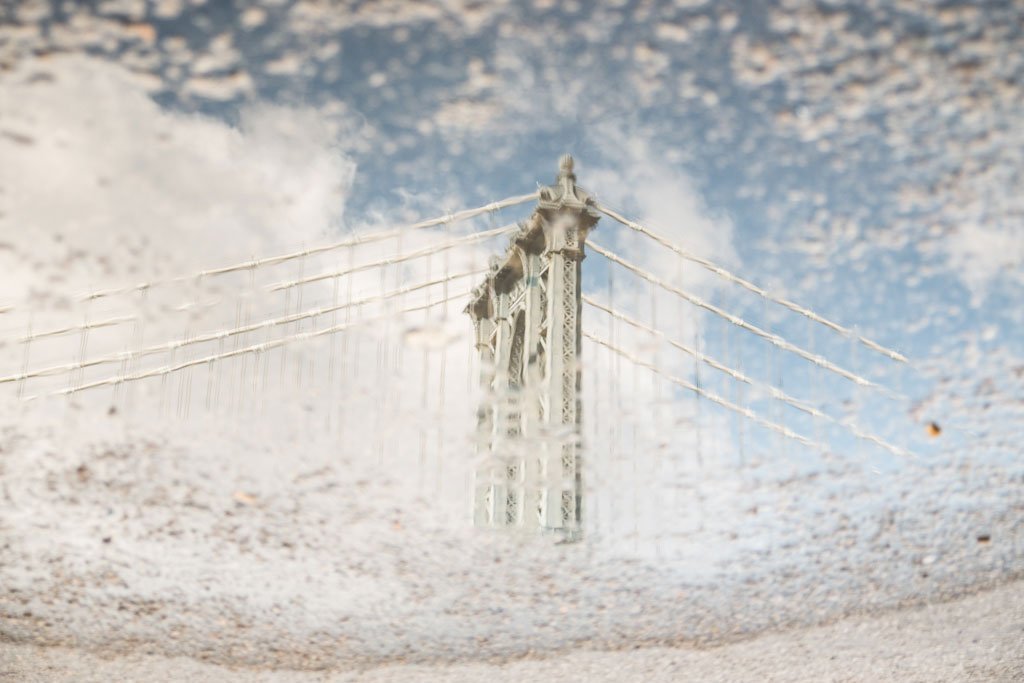
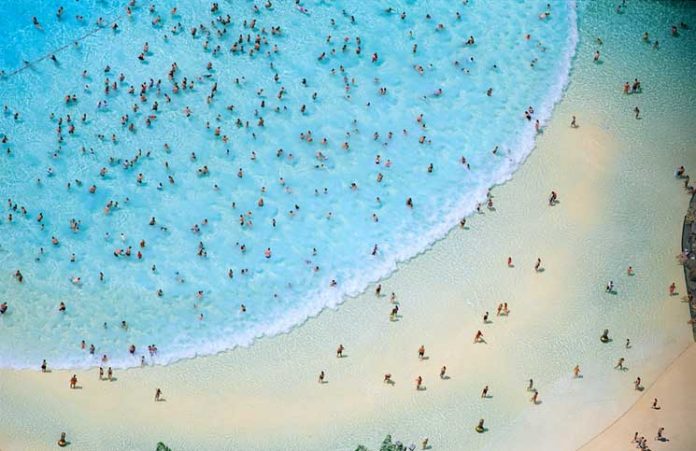





















 Maclean’s photos are to be exhibited for the first time in London from 3rd March 2014 at the
Maclean’s photos are to be exhibited for the first time in London from 3rd March 2014 at the